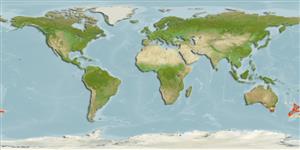Preferred temperature (संदर्भ
123201): 7.9 - 13.5, mean 11 °C (based on 43 cells).
Phylogenetic diversity index (संदर्भ
82804): PD
50 = 0.6250 [Uniqueness, from 0.5 = low to 2.0 = high].
Bayesian length-weight: a=0.00589 (0.00301 - 0.01154), b=3.12 (2.94 - 3.30), in cm total length, based on LWR estimates for this species & (Sub)family-body (Ref.
93245).
Trophic level (संदर्भ
69278): 3.9 ±0.6 se; based on diet studies.
लौटाव (संदर्भ
120179): माध्यम, न्यूनतम जनसंख्या दुगनी होने का समय 1.4 - 4.4 वर्ष। (K=0.4(?); tm=4; Fec~1million).
Prior r = 0.42, 95% CL = 0.27 - 0.62, Based on 5 data-limited stock assessments.
Fishing Vulnerability (Ref.
59153): Low to moderate vulnerability (35 of 100).
🛈
Climate Vulnerability (Ref.
125649): High to very high vulnerability (71 of 100).
🛈
Nutrients (Ref.
124155): Calcium = 56.8 [23.8, 116.8] mg/100g; Iron = 1.16 [0.65, 2.15] mg/100g; Protein = 19.6 [17.4, 21.5] %; Omega3 = 0.412 [0.214, 0.763] g/100g; Selenium = 47.5 [24.4, 100.0] μg/100g; VitaminA = 8.47 [2.69, 27.87] μg/100g; Zinc = 0.562 [0.389, 0.809] mg/100g (wet weight); based on
nutrient studies. 